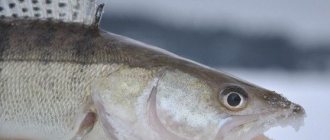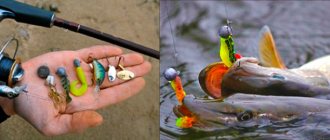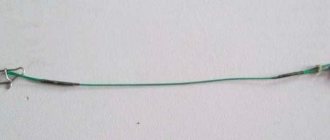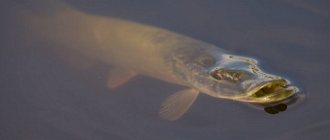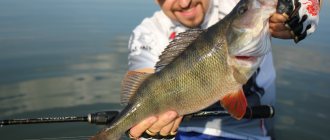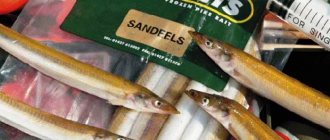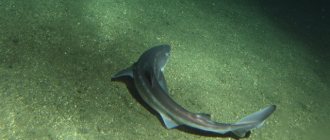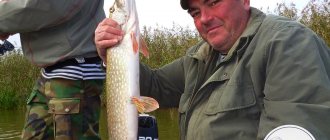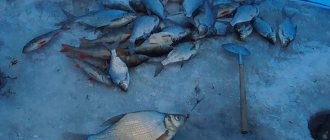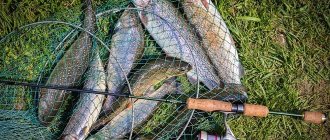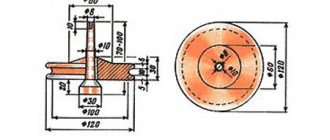Catching pike perch with a jig is one of the most promising and effective ways of hunting for it. By examining deep edges and experimenting with twisters and vibrotails, you can return home with an excellent catch. But such fishing also requires appropriate preparation, so let’s try to figure out how to catch pike perch with a jig in more detail.
Gear and its equipment
- The choice of spinning rod for fishing is determined by the specific fishing conditions and the weight of the expected trophies.
- Usually, when fishing from the shore, choose a fairly long rod: from 3 to 4 meters with a test weight of 10 to 40 grams.
- When fishing from a boat, it will be more convenient to fish with a spinning rod 2.1 - 2.5 m long.
- Choose a rigid rod, the tip must also be rigid, otherwise the angler will face a large number of empty hooks.
- The reel is a spinning reel with a front clutch - it is much easier to set up than the rear one.
- Fishing line. Braided line would be preferable to monofilament line here.
- For catching pike perch weighing no more than 2.5 kg, a cord with a cross-section of 0.12-0.14 mm will be quite sufficient. If larger pike perch predominate in the catches, take a braided line of larger diameter.
The baits are surrounded either with a classic jig head or with a “Cheburashka” sinker.
A leash is placed only if pike is often caught along with pike perch. The pike perch does not bite the fishing line.
Effective baits
When choosing bait for pike perch, the angler should pay special attention to baits of bright colors - orange, lemon, etc. He was always attracted by the variety of bright colors. The size of baits usually ranges from 10-12 cm; there is no point in using larger ones, since with a large amount of small things, they are unlikely to be of interest to a predator.
An assortment of modern jig baits - twisters, vibrotails, foam rubbers, silicone squids, loaches, etc. - extremely wide. Below, as an example, we list some models that have received high marks from a variety of anglers:
Twisters
- "Mister Twister" - classic American twisters. “Curly Tail” of acid green color, 9-12 cm long, is ideal for pike perch.
- "Fat G-tail Grub" from Japanese, green and green-yellow with a wide tail.
- German twisters "Turbotail" from .
- “Edible” “Wooly Curltail”, produced by , with an average length of 10 cm.
- Russian zander twisters “Nica” and “Lusky”.
All mentioned twisters have Chinese clones and “versions”, which are characterized by low price and low quality and durability. The same applies to other jig pike perch baits.
Vibrotails
- "Mister Twister Shad" - yellow, 6 to 8 cm long.
- LONG JOHN 07.90/PA03 - various acid shades with glitter.
- DEEP PEARL 100/016 – fairly cheap Latvian vibrotails of various shades and sizes. For pike perch, imitation roach measuring 7-8 cm is most suitable.
- ZANDER 130/X001, 13 cm long - for catching large pike perch.
- SUPER SHAD 080/137 - imitation of a sick fish.
- Lucky John Joco Shaker 2.5 for active and passive predator
“Squids”, “worms”, “loaches” - the most catchy models are produced by the same American ones. They have a large number of Chinese versions, which are usually enough for a maximum of 1-2 fishing trips.
Anglers usually cut foam fish for jigs themselves. To do this, you only need sharp scissors and a set of multi-colored dishwashing sponges.
Jig baits
When choosing jig baits, the spinning angler must take into account that pike perch prefers:
- bright orange and lemon;
- greenish-white colors.
The size of the bait is chosen small. The maximum length is 10-13 cm. Among the wide variety of jig baits, several main types should be distinguished.
Silicone twisters and vibrating tails are produced by many companies. Silicone fish from the following companies have proven themselves well:
- Berkley;
- Keytech;
- Crazy Fish;
- Reins;
- Assassin;
- Mister Twister;
- Mann's;
- Lucky John.
Lucky John - a budget series of catchable baits made of edible rubber
Foam rubber fish are very popular when fishing for pike perch . This simple and unsophisticated bait in the hands of a skilled fisherman can work wonders. When making a “foam rubber”, the fisherman can fully express his imagination and creativity. You can make bait in 5-10 minutes right while fishing. It is enough to have a piece of colored sponge for washing dishes and scissors to provide yourself with fish of different sizes and shapes.
Excellent baits for catching pike perch are polyurethane foam fish . They can be quickly made on a pond if you have a piece of polyurethane, a knife and fire. Polyurethane foam is cut into a rectangular size and then melted by constant rotation over a fire or in the flame of a lighter.
Jig selection
When choosing a jig head, you need to consider the following points:
- Depth in the fishing area
- Size of baits used
- Current strength
- Walleye Activity Level
The optimal weight of the jig head is considered to be such that when retrieving, after performing a jerk, it sinks to the bottom within no more than 5 seconds.
If you go by the weight-depth ratio, it should be something like this:
- For depths up to 2.5 meters - a jig weighing 5-10 grams
- From 2.5 to 4 – weight 8-12 grams
- From 4 to 7-8 – weight 12-15 grams
- From 8 to 10 – weight 15-20 grams
- At depths of more than 10 meters, weight from 20 grams
Wiring techniques
The technique of catching pike perch with a jig allows the use of the following popular fishing methods:
- After casting, make 2-3 turns of the reel, then pause. When the head weight reaches the bottom, the technique is repeated. And so on.
- The abandoned equipment is pulled to a distance of 1 to 2 m using a fishing rod. After it reaches the bottom, the rod is lowered and the slack in the fishing line is removed. The technique is repeated. In this technique, at the stage of lowering the bait, you can use it to jerk it upward with a rod.
- Casting against the current. Once the rig reaches the ground, it is tossed up. The nozzle is carried away by the current until it falls to the bottom. The technique is repeated. Rewinding is only needed when the line sags.
- When retrieving, the jig is moved above the bottom in small steps using jerks of the rod, similar to hooking. Jerks are allowed both upwards and to the sides.
Essentially, the technique of placing a jig bait involves periodically pulling up the fishing line and hitting the bottom with the bait, and there are no rules here. The main thing is that the jig is a saw. There are many wiring options. In fact, you can do anything that can provoke the fish to bite.
Equipment
When fishing with jig, correct installation of equipment is important. Of all the installation methods, the following are distinguished:
- Direct tooling
- Retractable leash
- Jig rig
Direct tooling
Direct equipment is most widespread because it is distinguished by its simplicity. It has two types of connection. In the first case, the jig head is attached to the fishing line using a carabiner or connecting ring. This is the most sensitive equipment option.
In the second case, a “Cheburashka” sinker is used, through which installation is carried out. With this method, the bait will play more actively.
Retractable leash
The leash is made of braided or mono fishing line with a diameter smaller than the main one, and the bait is attached to it. The advantage of the rig is that in the event of a snag, the angler will retain the main line, losing only the leash with the bait.
Jig rig
This method also increases the activity of the game and reduces the number of hooks. It looks like this: a ring is tied to the main fishing line, to which a bait with a hook and a weight is attached using a carabiner.
Pike perch fishing spots
When going fishing, first of all you should decide on a place. The most promising are deep-water rivers with uneven bottom topography - snags and whirlpools. But it is better to avoid shallow waters with a flat bottom or heavily overgrown areas.
In addition to the deep places with a stuck bottom mentioned above, you should pay attention to the following:
- Shallow water areas (especially in the summer), where pike perch often swim in pursuit of prey.
- Channel holes on rivers, a little away from the strong current.
- Unlike small and medium-sized rivers, on reservoirs and large lakes, fishing spots for pike perch are always located at a large (at least 70-100 meters) distance from the shore.
- All kinds of bottom irregularities, edges, depth changes.
- The mouths of small rivers and streams - in such places there is always a lot of fry and other food.
- Areas eroded by springs.
- Places near fallen trees, destroyed bridges, dams, etc.
- Areas where the river bed narrows significantly.
Features of catching pike perch at night using a spinning rod in summer
Summer is the most favorable period for night hunting for pike perch. It is easiest to catch a fanged one in the warm season in the dark. The main peaks of predator activity on a summer night occur at the following hours:
- 22-23 hours the first burst of bites, starting at sunset and lasting about an hour.
- Just after midnight. The exit lasts about an hour. This is the most exciting period in summer night fishing.
- 3–4 a.m. before sunrise. As it gets lighter, the bite subsides, and by 5–6 am it subsides.
Catching pike perch at night in the summer causes the least amount of difficulty for beginners, so it is better to master this area of fanged hunting in the warm season.
Places to catch pike perch at night in summer
A special feature of summer night pike perch fishing is the emergence of fish in shallow sections of rivers. Often the fanged one is caught in characteristic places:
- Sand spits and shallows.
- Shallow riffles with a rocky, pebble or sandy bottom.
- Shallow areas near hydraulic structures.
Pike perch likes to feed in the area of stone embankments that reinforce the banks. Actively hunts in the coastal zone near bridge supports and in the area of piers.
Detailed article: catching pike perch in the summer with a spinning rod.
In summer, fishing for pike perch at night from the shore is practiced. There is no need for a boat as most of the typical sites listed above are within reach from land. Any bait can be thrown to a promising point without resorting to the services of watercraft.
Lures for catching pike perch at night with a spinning rod
The best baits for night pike-perch fishing are shallow-water minnow-class wobblers. They imitate the food item of a predator as closely as possible:
- An elongated body, its shape imitates a narrow-bodied fish, bleak, perch, chub or roach.
- A rudimentary blade defining the subsurface working horizon.
- The wobbler's action is realistic, reminiscent of a fish running away or losing its orientation.
These bulky baits go at shallow depths. The working range is in the range of 5–40 cm. This is enough to fish shallow water areas into which a predator jumps out and grabs the fry that has accumulated there.
Not every shallow-water minnow is suitable for catching pike perch. The wobbler must meet the following requirements:
- Length 7–11 cm. Larger baits will have little grip.
- Having your own game is mandatory, since the optimal wobbler movement for night pike perch will be uniform or even with pauses.
- Type of buoyancy – floating. In order to be able to make long stops in the middle of the wiring.
- Ability to work in the current.
Catching pike perch with wobblers at night is not the only way to tempt the fanged one. Less commonly, the predator is caught with crank-class wobblers. Shallow-water baits are used: SSR - Super Shallow Runner, which do not go deeper than 30 cm. They are good in cases where the fish are reluctant to grab quiet minnows. Therefore, it is appropriate to try to persuade her with the help of noisy stubborn pot-bellied fats.
Rubber baits produce good results. Twisters and vibrating tails measuring 3-4 inches are used. They are mounted on open jig heads of the minimum possible weight so that they work in the top layer. The best ways to wire silicone are wavy and uniform.
Spinners and topwaters can also be used for night fangs. However, they are inferior in efficiency to wobblers and silicone. It is better to take them with you to the pond as an alternative when the pike perch ignores the usual baits.
Fishing from a boat and from the shore
A boat (coupled with a good echo sounder) significantly expands the capabilities of a pike perch hunter and significantly increases his chances of success. You should fish from a boat alone; with a partner you will create a lot of inconvenience for each other, in addition, when there are two anglers in a boat, the risk of injury increases significantly.
A boat makes the fisherman mobile, so it’s not worth staying in one place for a long time; chasing pike perch using an echo sounder will be much more effective. In addition, you can catch pike perch from a boat using jig trolling.
Fishing from the shore is much more difficult and requires the angler to have good command of the gear, since he has to make long and ultra-long casts, as well as use test casts to explore the relief and depth of the chosen place.
Fishing tactics
The most common way of wiring a jig is stepwise. It is done like this: after casting, we wait until the bait is on the bottom, then several turns of the reel follow. The bait comes off the bottom, then there is another pause and it goes back to the bottom.
Another option is wiring with swinging. Almost the same as the stepped one, only during pauses we slightly shake the tip of the tackle. More suitable for passive pike perch.
Lengthy wiring. Essentially the same “step”, only at the moment when the bait is at the bottom, an additional pause of 2-3 seconds is maintained.
A completely lethargic predator can be attracted by dragging along the bottom. In this case, the reel is rotated very slowly so that the bait does not come off the bottom, but simply drags slowly along it. This type of wiring is not suitable for areas with a rocky bottom or with a lot of aquatic vegetation.
Often, bites when jig fishing for pike perch occur while the bait is immersed after casting, so be careful. Over time, you will acquire all the necessary skills, you will be able to easily control the game of the jig, determine where the shallows are and where the hole is. Then you can gradually diversify the wiring options.
- For example, in areas with deep water and strong currents, try fishing from top to bottom. This method allows you to carefully examine the hole until the bait is carried away by the current.
- Or, on the contrary, try to lead the jig against the current, so that it drags along the bottom.
- You can also try to give the bait freedom of action after casting, only occasionally lifting it from the bottom. The current itself can deliver it to the predator. At the same time, try to control the tackle, especially when the jig passes through areas with changes in depth.
- If you are fishing from a boat, try to move the bait across the edge, from the shallows to the depths - this way you will feel the bottom better. In this case, the wiring should be stepped, the pause in the fall of the bait should be about a second.
If the bite, as they say, leaves much to be desired, then try fishing with the smallest and narrowest vibrotails or twisters, using the most sensitive gear. A skillfully presented bait will force even the most capricious predator to become active.
Jig baits and jig heads for pike perch
The choice of jig bait for walleye fishing is of great importance, much more than the choice of rod, reel or equipment. If you choose the wrong rod, you can still catch a pike perch, but if you choose the wrong bait, you risk being left without a bite.
As for jig baits, the pike perch here is a real gourmet. There are certain baits of a certain color that pike perch attack with great pleasure, while another color or shape of bait may not interest him at all.
Let's first look at what kind of bait you need to have for catching pike perch with a jig, and then we will highlight the best and most effective of them. It is clear that silicone baits are used for jig fishing in the vast majority of cases. These are the baits you can use to catch pike perch:
- vibrotails;
- twisters;
- rubber squids;
- rubber crustaceans.
There are other baits for catching pike perch with a jig, but we will focus on the classic version - silicone. Any of these baits are great for catching pike perch. But, if you are a beginner, then it is better for you to start with those baits that most often bring good results.
The best lures for catching pike perch on a jig . Twisters can rightfully be called one of the best baits for catching pike perch. They do their job very well. Using stepped retrieve, either with a rod or a reel, the pike perch will respond perfectly.
Stepped retrieve is a retrieve during which the bait seems to jump along the bottom in a zigzag motion. Most often, such wiring is carried out using a coil. When the twister has fallen to the bottom, we make a few turns of the reel and stop, touching the bottom with the bait - again a few turns of the reel.
You can learn more about spinning wires in this article. But you also need to choose the right color. And pike perch react best to twisters of this color:
- yellow;
- light green;
- orange.
Such bright colors most often provoke pike perch to bite. Although anglers often use twisters of other colors, this should only be done when other colors are silent.
The size of baits for catching pike perch should be about 10 cm, but larger ones can be used, then the likelihood of catching a large predator increases. But, of course, in addition to twisters, there are other excellent baits; below in the picture you can see the most catchy baits for catching pike perch on a jig, which are highly appreciated by professionals and amateurs of pike perch fishing:
The best lures for catching pike perch
And of course, every angler should know how to attach a jig bait to a jig head. The process itself will be explained to you right in the fishing store where you will buy bait. You can even ask for several baits to be put on jig heads. When I first started fishing, that's what I did. But you should know the methods of planting. Here they are:
Methods for putting jig baits on jig heads
But you also need to choose jig heads for jig baits. They come in different shapes, due to which they have different characteristics when deployed and falling to the bottom. Each angler eventually develops his own favorite type of jig head. Here they are:
The most popular jig head for catching any predatory fish on a spinning rod is undoubtedly the “Ball”. It is quite good, pike perch often bite on it, but there is one drawback. The bait on this jig head falls on its side when it falls to the bottom. And the game turns out to be a little incorrect, that is, the bait becomes more like a dying fry than a fry that is swarming at the bottom in search of food.
To prevent the bait from falling on its side when lowering to the bottom, it is optimal to use such heads as “Rugby”, “Horseshoe”, “Vanka Vstanka”. Well, over time, I would advise you to try all types of jig heads when fishing for pike perch, so that you can independently determine the most successful one for you. After all, each angler has a unique wiring and everyone does step wiring differently, although it has the same principle.
Fishing at night
In recent years, night fishing for pike perch using jigs has become increasingly popular. This fishing is more technically complex, but also more effective. Of course, provided that you choose a promising place for the upcoming fishing in advance, during daylight hours.
- An important point in night fishing is the bite itself, which the angler must notice immediately and react as quickly as possible
- Use larger baits, they are more effective
- The retrieve should be slow and smooth, as the lack of visibility makes it more difficult for a predator to recognize it
Catching night pike perch with a jig: where to start
The first and most important thing in night fishing for pike perch is safety. I use a PVC boat, so I don’t go far and don’t stick my head out onto the Volga fairway. I think that using inflatable boats of dark and gray colors is unsafe and even risky, at least in deep water. The next important point is lighting, both during movement and during fishing. You should always be clearly visible! This is also safety. And, of course, life jackets should always be in the boat. I also use headlamps and simple flashlights. I always have spare batteries with me on the boat.
The first few fishing trips I didn’t see a single bite. But gradually, by changing places, selecting baits and their presentation, I achieved sustainable positive results. Naturally, I will not rent out places, but I will indicate their types. The depths at which pike perch were caught ranged from seven to eleven meters, but we are talking about fishing on the Volga. In most cases, these were places with massive driftwood, construction debris, or large areas of shell rock. The more difficult the terrain, the better. Places that work during the day don't always work at night. But, according to my observations, you need to look near daytime points, just at shallower depths. The presence of leucorrhoea is welcome, but I also caught from points where it was practically absent.
One important tip. Don’t stand at every snag and every dump. Until you see a pike perch on the echo sounder screen, it’s almost pointless to get up. I associate night fishing with spring. You can swim half the night looking for places, but once you find the right one, you can quickly catch a ton of fish. I recommend that you identify promising places during the day, and at night do not wander around in the dark, but simply check specific positions.
If you find a place where there is pike perch, this does not mean that it will bite right away. According to my observations, pike perch bite in periods, the so-called exits. I can’t yet say with certainty that this is correct, but I structure my fishing trips this way: during the day I find two or three areas that interest me, and then I spend a couple of hours on each of them at night. Most often, standing still bears fruit: after a long lull, the fish seem to be turned on, and the pike perch bites on every cast, and then turns off again.
Now a few words about the gear. Since fishing is carried out with weights from 20 to 50 grams, a spinning rod with a range of up to 60 grams suggests itself. But I like the weight to be in the middle of the range, so I carry two rods with me. There are no unusual requirements for them, it’s just important not to oversleep the bite, and therefore the louder the rod, the better. I use fluorocarbon leashes or not at all. My logic is this: the string is not so much visible as it creates noise in the current, which confuses the passive fish.
And now the most important thing - bait and weights. As for lures, I made the following conclusions for myself: bright colors work best, and the lures themselves should be voluminous. My favorites: Relax Kopyto 4-6″, JigDream Killer 6.5″, Swing Impact 4.5″, Narval Commander Shad 120-160 and Keitech Easy Shiner 4.5-6.5″. There were several catches on foam rubber. I mount the bait most often on a jig head, less often on a double. I don’t use offset hooks; it’s better to tear off the bait than to miss the fish.
About cargo. According to my observations, you need to catch it while hanging for a long time. Two or three grams does not matter, but you need to gain weight. The pause between revolutions should be long, at least four seconds. Therefore, when going out fishing at night, make sure that you have a good supply of lead of different weights in increments of 2-4 grams.
Well, the last point is the performances. I fish both in the stern and in the drift. In my practice, drift fishing has been more effective, but it all depends on the fishing conditions, so here I will give only one piece of advice: you have to try.
Night fishing for pike perch is very promising and productive, you just need to master it. With the right approach and known experience, you can regularly pull out trophy pike perch. This is evidenced by the reports of our Samara fishermen. I'm just getting there for now. And I want to get there my own way and fish from my points. I wish the same for everyone.
I hope this article was helpful. If experienced fishermen have anything to add or correct somewhere, then be sure to write. I will continue to move in this direction and will definitely share my observations later.
None of them have a tail or scales. Follow safety precautions and be polite on the water.
Fished with: Norstream Proxima 804MH, Stinger Aggregate HD 3000.
Sonar: Lowrance Elit Ti2 9″.
Seasonal fishing
With the onset of spring, when the ice melts and the water warms up to 10-12 degrees, the pike perch begins to actively feed. At this time he is not so picky. The main criterion for successful fishing will be sufficient water transparency and the right location. Zhor continues until spawning.
After the end of spawning, pike perch resumes active hunting. It can be caught throughout the day; the best places for fishing are considered to be significant differences in depth. In summer it responds better to conventional stepped wiring.
From about mid-July, the activity of pike perch sharply decreases, only towards the end of summer there are rare catchy days.
But with the arrival of autumn, he again begins to feed intensively. Schools of pike perch move around the pond a lot, so you will have to constantly move in search of a predator. But such fishing is worth it.
As the water temperature drops, the bite declines; closer to November, pike perch almost stops being caught.
In winter, pike perch fishing continues in ice-free waters. But it is worth noting that the predator is inactive and stays exclusively at great depths. Reacts only to extremely slow wiring with long pauses.
